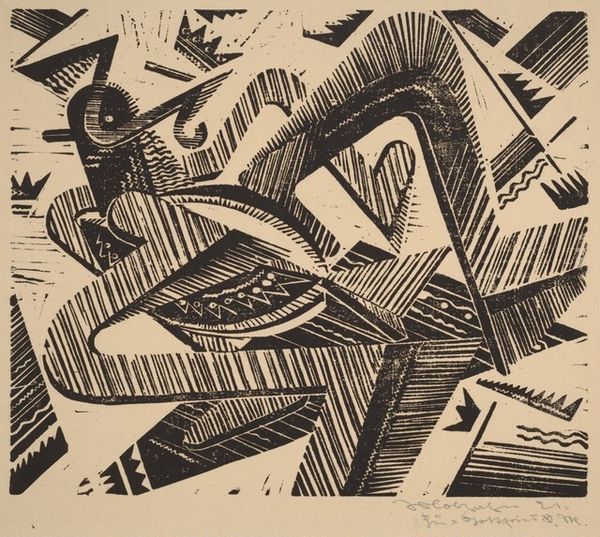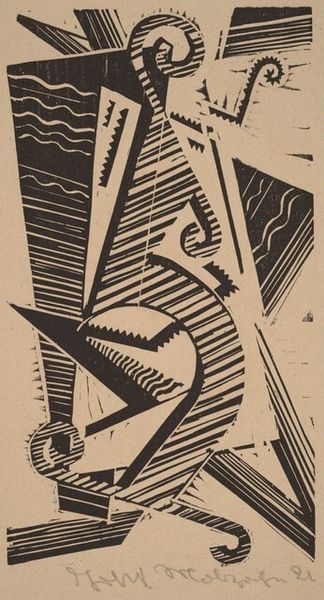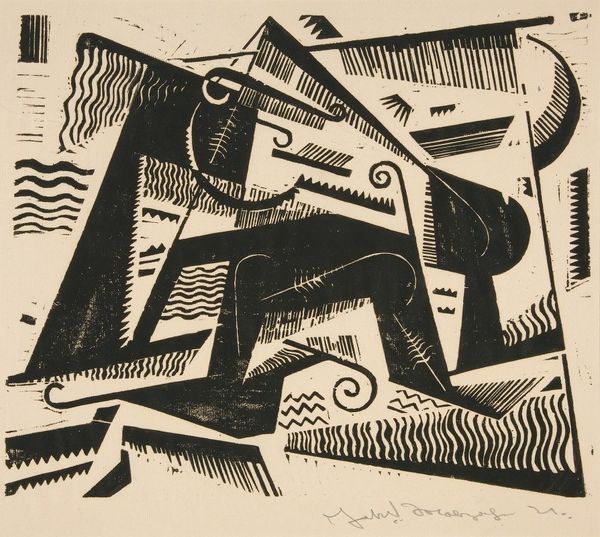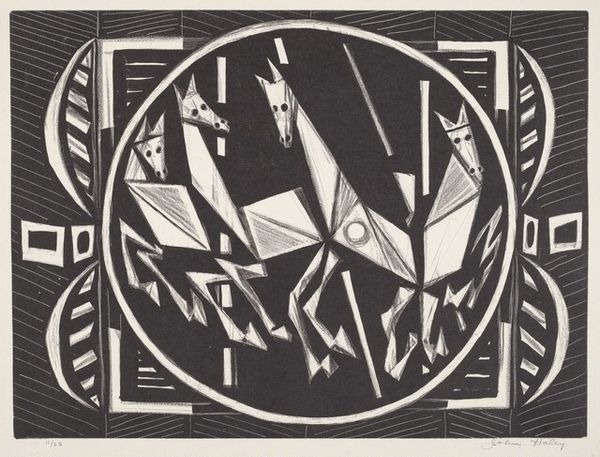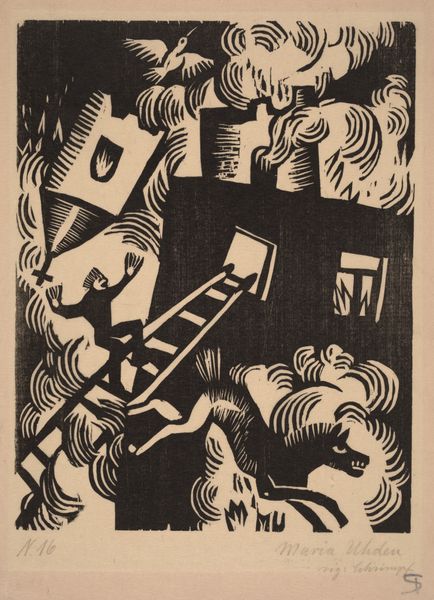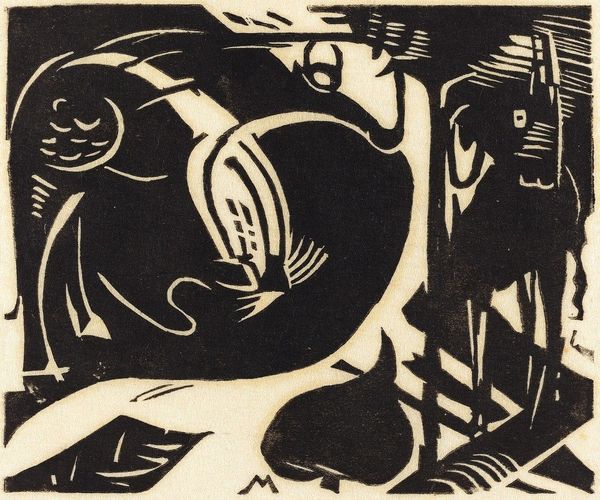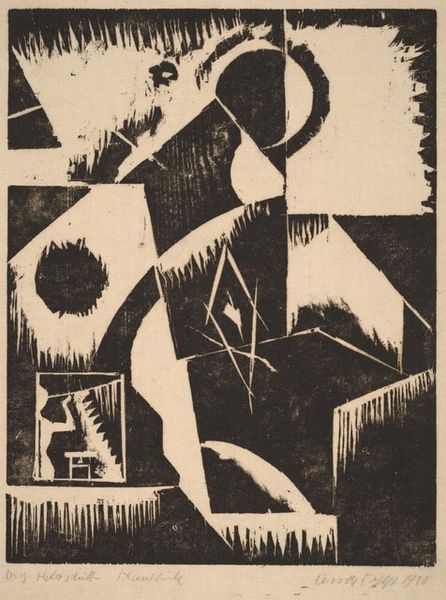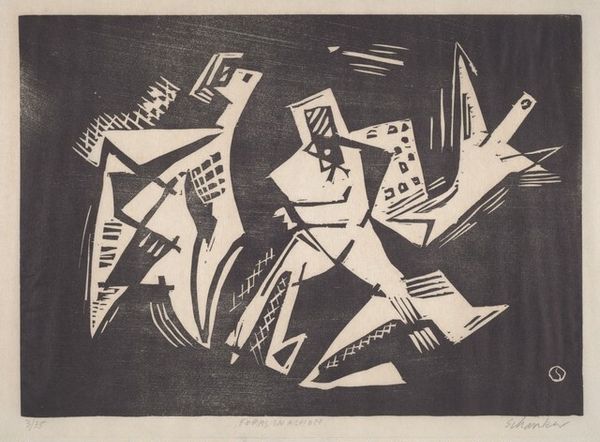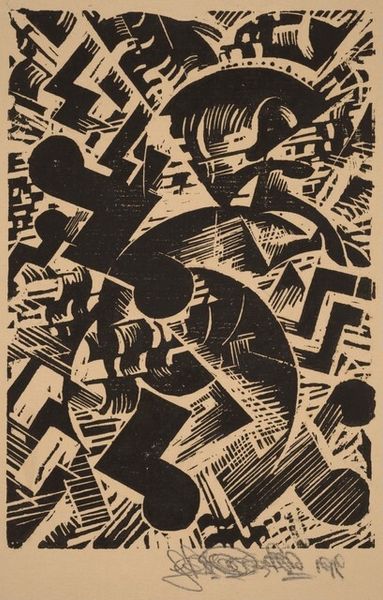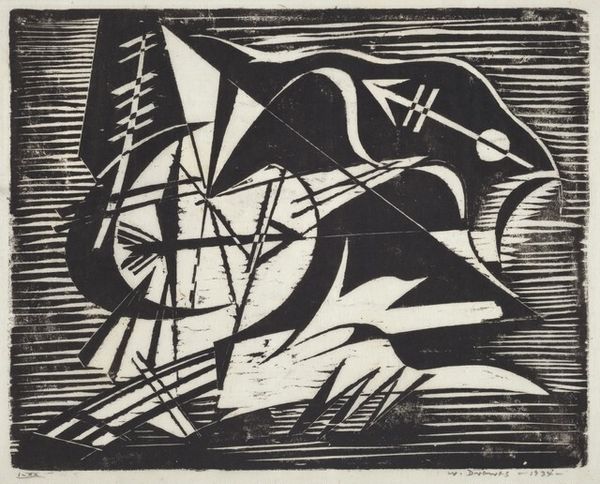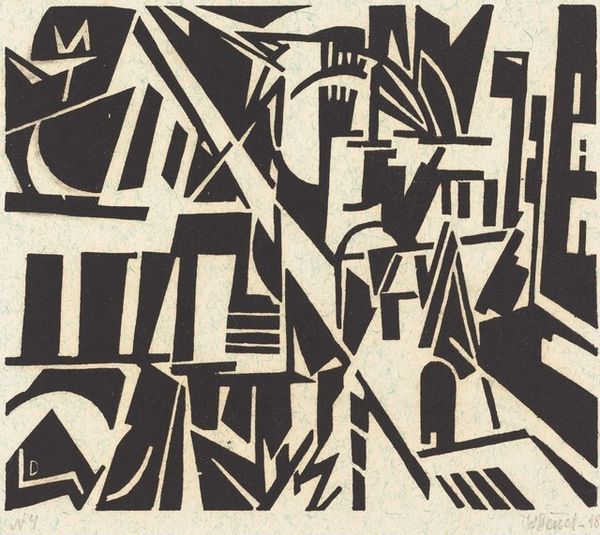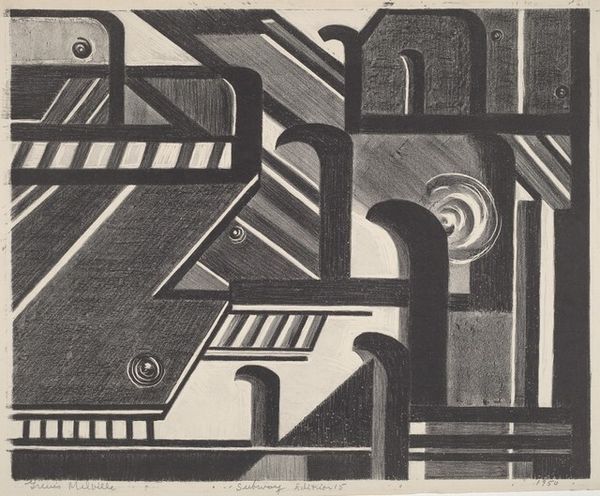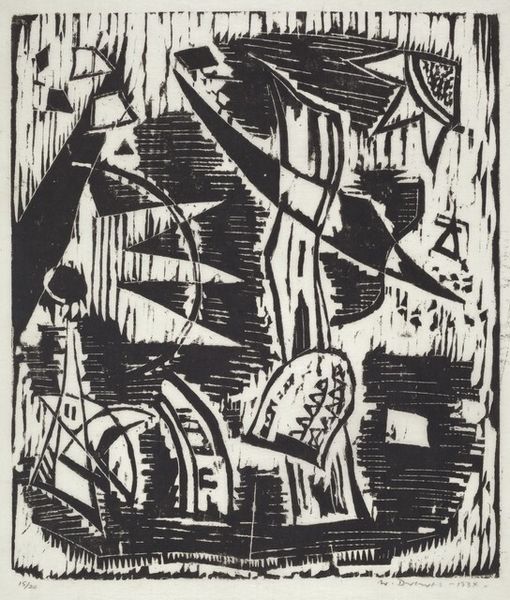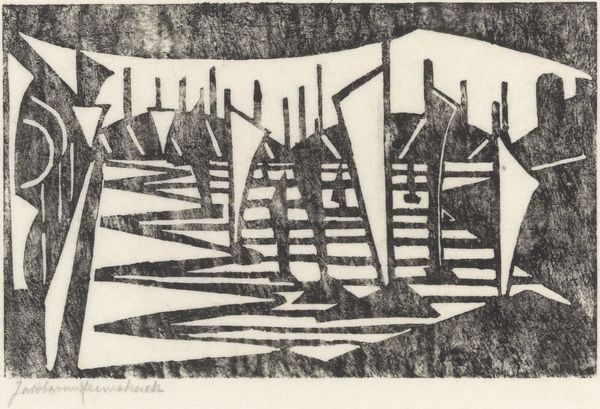
print, linocut, woodcut
# print
#
linocut
#
german-expressionism
#
abstract
#
form
#
linocut print
#
expressionism
#
woodcut
#
geometric-abstraction
#
line
#
modernism
Copyright: Public Domain: Artvee
Curator: Let's turn our attention to Johannes Molzahn's "Opus XXXV," a striking linocut print created in 1921. Editor: It hits you immediately, doesn’t it? This overwhelming energy, the chaos of sharp lines battling for space on the paper. It feels tense. Curator: It certainly reflects the mood of its time. Molzahn was deeply engaged with the avant-garde movements following World War I. He sought a new visual language, embracing abstraction to reflect a rapidly changing world. Editor: That makes sense. You can see the Expressionist influence here, in the bold, raw quality of the linework, yet the abstraction points towards something more forward-looking. It feels like an attempt to build new meaning after societal upheaval, not just depicting the surface, but the underlying forces. Curator: Exactly. Prints like these were more than just aesthetic exercises. They were often tied to social and political commentary, circulating within networks of artists and intellectuals interested in transforming society through art. Editor: There’s an intentional ambiguity here, too. Is this about celebrating industrial progress, or critiquing its dehumanizing aspects? Are those crowns scattered throughout, signs of broken empires or rising powers? The lack of clear answers speaks volumes. It encourages active interpretation, and demands the viewer consider their role in constructing meaning. Curator: Molzahn believed art should be integrated into everyday life. His involvement with groups like the Novembergruppe demonstrates his commitment to making art accessible, affordable, and socially relevant during the Weimar Republic. Editor: Understanding that political landscape illuminates the potential motivations here. The Weimar period was defined by sharp ideological division, where anxieties about modernization, economic stability, and national identity influenced art’s social role and reception. Molzahn clearly understood the role artists played at that time, the power of art in fueling dialogue. Curator: Precisely. Considering the period’s struggles only reinforces the work's overall theme and urgency. It also speaks to the ongoing tension and negotiations inherent in artistic practices and social change. Editor: It’s remarkable how this hundred-year-old piece still manages to provoke that kind of active thought. Curator: Indeed, and a reminder of art's ongoing relevance in understanding the forces that shape our own times.
Comments
No comments
Be the first to comment and join the conversation on the ultimate creative platform.
